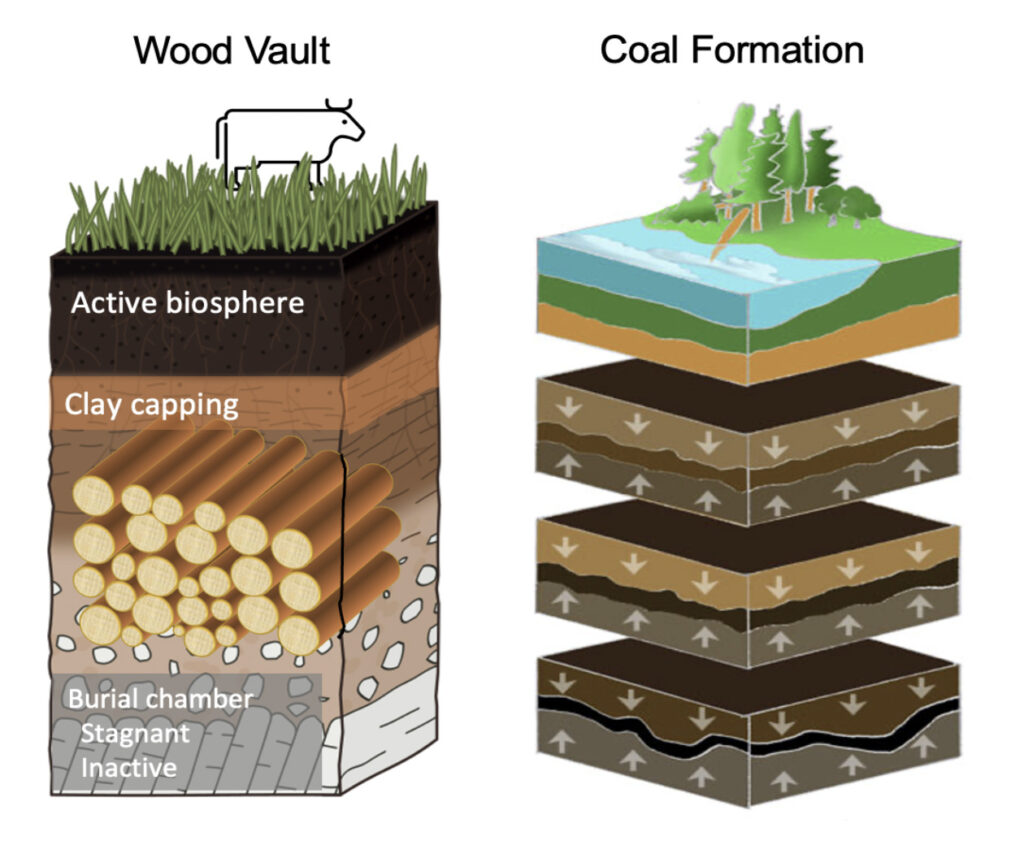Climate Vault Announces Recipients of CDR Innovation Award
Reducing and removing carbon emissions in a credible and verifiable way is critical now more than ever, and carbon dioxide removal (CDR) has an increasingly important role to play in combating the worst impacts of climate change. In order to achieve gigaton-scale carbon removal by mid-century, we need multiple reliable, scalable, and quantifiable approaches to remove and store carbon dioxide. To help support the development of these technologies, the Climate Vault, Inc. nonprofit hosted an RFP for Innovative CDR solutions in 2023 to provide CDR project developers with support and recognition to help achieve a carbon-neutral future.
Today we’re thrilled to share that the Climate Vault Tech Chamber, led by former U.S. Energy Secretary Ernest Moniz, has selected Carbon Lockdown and Octavia Carbon for its 2023 Carbon Dioxide Removal Innovation Award through its RFP process. This is the first time the Tech Chamber’s rigorous standards for CDR solutions have ever been met. Carbon Lockdown’s and Octavia Carbon’s carbon removal projects have the combined potential to remove 15,000 metric tons of CO2 from the atmosphere.
Carbon Lockdown
Located in rural Maryland, Carbon Lockdown’s project involves the collection and secure storage of sustainably-sourced woody biomass. The biomass is stored in a “wood vault” (see image 1), which is a specially-engineered underground structure that prevents the decomposition and re-release of the biomass’ embodied CO2 back into the atmosphere. Wood vault technology ensures durable preservation of buried biomass, and is akin to the first step of fossil fuel formation. That’s why some people call it ‘reverse coal’. Carbon Lockdown’s project can achieve the removal of up to 5,000 net metric tons of CO2.

The Carbon Lockdown project was created to facilitate sustainable carbon sequestration technologies. Carbon Lockdown’s objectives include project development, project evaluation, monitoring and certification, and information exchange platforms. Their team currently focuses on two methods for wood harvesting and storage in order to:
- Ensure longevity of stored wood while minimizing environmental impact
- Manage forests for wood harvesting
- Identify sources of waste wood with co-benefits such as reduction of fire risk
“Carbon Lockdown is thrilled and honored to have been selected by Climate Vault’s Tech Chamber as a winner of the 2023 Carbon Dioxide Removal Innovation Award,” said company founder and University of Maryland Professor Dr. Ning Zeng. “We look forward to working with Climate Vault to advance and scale our Wood Vault technology, which offers high-quality durable CDR with low-cost potential that is ready to deploy now.”
Octavia Carbon
Octavia Carbon is the Global South’s first direct air capture (DAC) company based in Nairobi, Kenya. They are developing geothermal integrated DAC machines that filter CO2 from the atmosphere. Leveraging Kenya’s geology along the Rift Valley, the captured CO2 will be injected underground for secure and permanent storage.
Octavia Carbon’s pilot DAC+Storage project, Project Hummingbird (see image 2), will be commissioned later this year. It will initially have the capacity to capture and securely store up to 10,000 net metric tons of CO2. By leveraging Kenya’s renewable energy, geology, and talent, Octavia Carbon is on a mission to not only drive down the cost of DAC but also promote socio-economic growth within the region.

“It is an incredible honor to be selected by Climate Vault’s Tech Chamber for their 2023 Carbon Dioxide Removal Innovation Award. This recognition not only validates the potential of Octavia’s Direct Air Capture (DAC) technology but also highlights the critical role DAC has to play in tackling climate change,” said Martin Freimüller, Founder and CEO of Octavia Carbon. “Climate Vault’s commitment to supporting innovative CDR solutions like ours is exactly what we need to accelerate carbon removal in time to address the climate issue. Their support will provide the perfect springboard for us to accelerate the development and deployment of our low-cost DAC technology in Kenya. We are excited to collaborate with Climate Vault and leverage their support to advance our DAC solution.”
Climate Vault Donors’ Advanced Market Commitment
At Climate Vault our goal is to reduce and remove global carbon dioxide emissions, while supporting the development and scaling of innovative CDR technologies and the CDR ecosystem. The selection of Octavia Carbon and Carbon Lockdown as our first Carbon Dioxide Removal Innovation Award winners validates this mission.
Climate Vault has already made a large volume advanced market commitment to purchase available removals from Tech Chamber approved CDR projects, currently totaling over 1.1 million metric tons and growing. This is thanks to the support of Climate Vault’s more than 50 institutional partners and hundreds of individual donors. By purchasing and “vaulting” these emission allowances from compliance markets, we have already helped to reduce the expected damages from climate change by more than $250 million.
While immediate carbon reductions provide an immediate and meaningful impact, reduction efforts alone are not enough to mitigate the worst effects of climate change. This is why Climate Vault’s integrated solution then goes one step further by using the value of the vaulted allowances to spur innovation in CDR technologies, while remaining faithful to our commitment to Climate Vault donors to help reduce their carbon footprint.
“Virtually all plans to limit climate change rely on the removal of past CO2 emissions from the atmosphere. The problem is that these technologies are largely unproven at prices that would make them widely economical or scalable,” said Michael Greenstone, Co-Founder of Climate Vault and the Milton Friedman Distinguished Service Professor of Economics at the University of Chicago. “Hope is not a strategy. We at Climate Vault believe that economic incentives, like our advanced market commitment, are vital to unlocking the necessary innovation. We couldn’t be more excited that Carbon Lockdown and Octavia Carbon are the first two companies to have their technology validated by the Tech Chamber as trustworthy for credibly removing CO2 from the atmosphere.”
Carbon Lockdown and Octavia Carbon were chosen from a pool of more than 50 CDR companies that applied for consideration in response to Climate Vault’s 2023 request for proposals. The number of applicants increased five-fold from Climate Vault’s first RFP issued in 2021, underscoring the power of the advanced market commitment.
The Climate Vault Tech Chamber
Climate Vault’s Request For Proposals (RFP) for innovative CDR technologies includes a comprehensive evaluation by the Climate Vault Tech Chamber. The Tech Chamber is led by former U.S. Energy Secretary Ernest Moniz with scientific experts from MIT, Princeton, Harvard, and UC San Diego (Scripps Oceanography). The Tech Chamber’s deep subject-matter expertise, diverse experience across academia, government and the private sector, as well as their respected positions at the forefront of discussion and decision-making on climate change issues, makes them uniquely qualified to assess and identify the carbon removal technologies that have the most potential to make a significant impact in the fight against climate change.
The Tech Chamber’s expertise, coupled with their due diligence process, results in only the most effective and credible projects being selected to provide verified carbon removals, and thus reduces the risk of our partners’ sustainability initiatives falling short. Additionally, as part of Climate Vault’s and the Tech Chamber’s 4-part RFP review process, both Octavia Carbon and Carbon Lockdown also underwent a third-party assessment. This was conducted by Climate Vault’s esteemed auditors, DNV and EnergyLink Services, to provide an independent layer of review and assurance regarding the proposed carbon removal projects and application materials.
“CDR is essential if the United States and other countries are to reach net-zero emissions – and eventually a net-negative emissions economy,” said Moniz. “Supporting innovative CDR, like the projects announced today, is a critical step at this early stage of progress towards gigaton scale legacy carbon removal from the atmosphere and upper layers of the oceans.”
Commitment to Quality
Our announcement aligns closely with the Biden-Harris Administration’s recently unveiled Principles for High-Integrity Voluntary Carbon Markets, which emphasize credibility, verifiability, and transparency—cornerstones of Climate Vault’s operational ethos. These new principles support innovative solutions to the climate crisis and validate our commitment to rigorous due diligence and integrity in both the carbon reduction and carbon removal spaces.
Innovative CDR Needs Our Support Today
As we look to the future, one thing is clear: CDR is not just a concept—it’s our path forward. While efforts towards emission reduction and decarbonization are vital, CDR technologies hold the key to saving our planet for future generations. The field, however, is still in its infancy. Novel methods—technologies that are partially- or fully-engineered like those or our two honorees—account for only 0.1% of global CDR, according to the 2023 State of Carbon Dioxide Removal Report. For removal of historical CO2 emissions to succeed, there must be immense advancements of novel CDR methods this decade.
At Climate Vault, this is why we’re leading the charge by evaluating CDR solutions and their impact through our annual RFP for Innovative CDR technologies. Through our stringent review process, we are able to cut through the complexity of the CDR space, delivering impactful carbon removal solutions to Climate Vault supporters while reducing their administrative burden. As we celebrate today’s successful outcome of the 2023 RFP round, we are already planning ahead to launch our new RFP cycle later this year. Organizations that are interested in applying for the 2024 Carbon Dioxide Removal (CDR) Innovation Award can sign up to be the first to receive the RFP Application and Additional Information document when it becomes available. Only together can we preserve the planet we call home for our future generations.
Learn more about each of the RFP recipients and the potential impact of their projects on the climate crisis by registering to attend Climate Vault’s upcoming free CDR webinar series.
